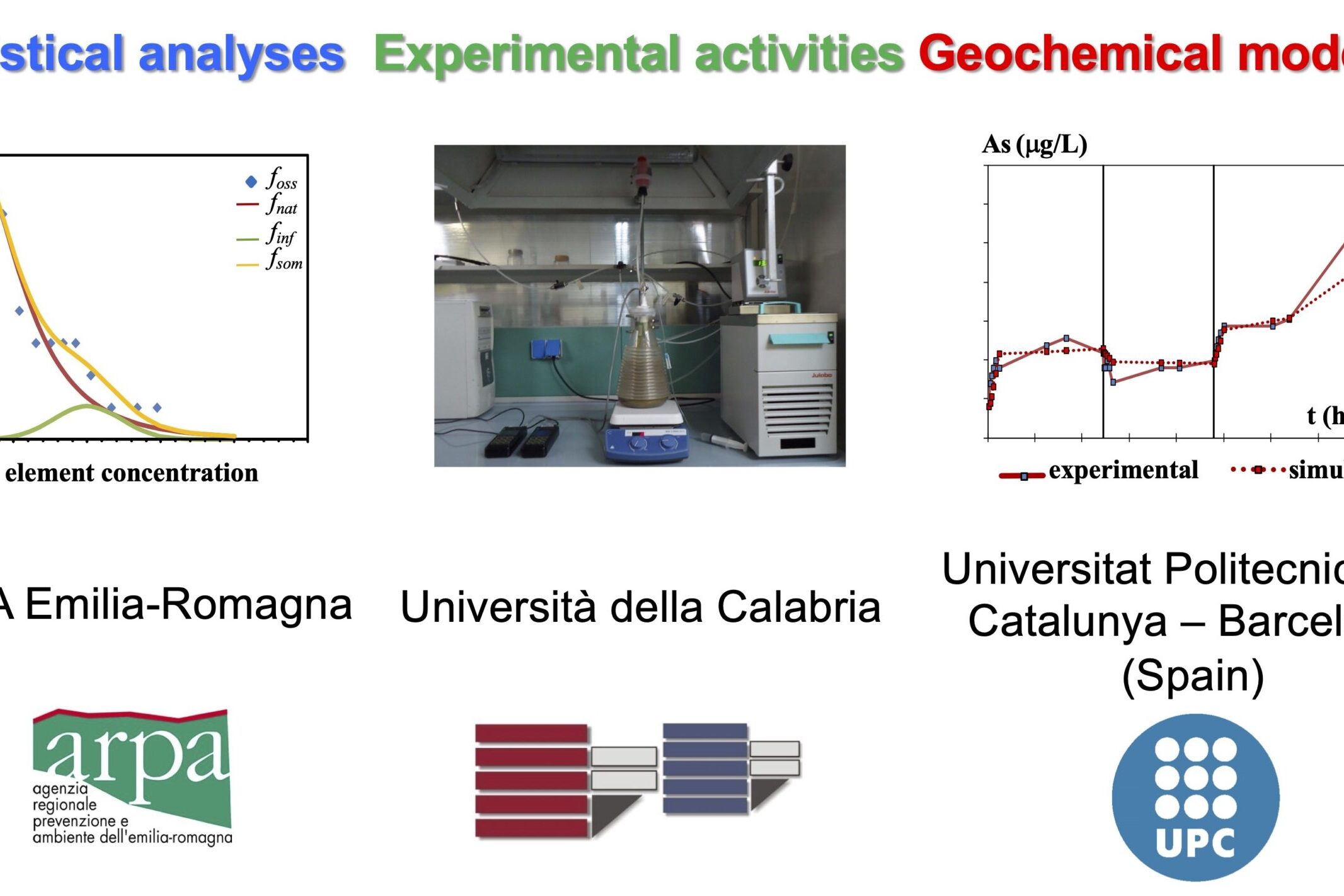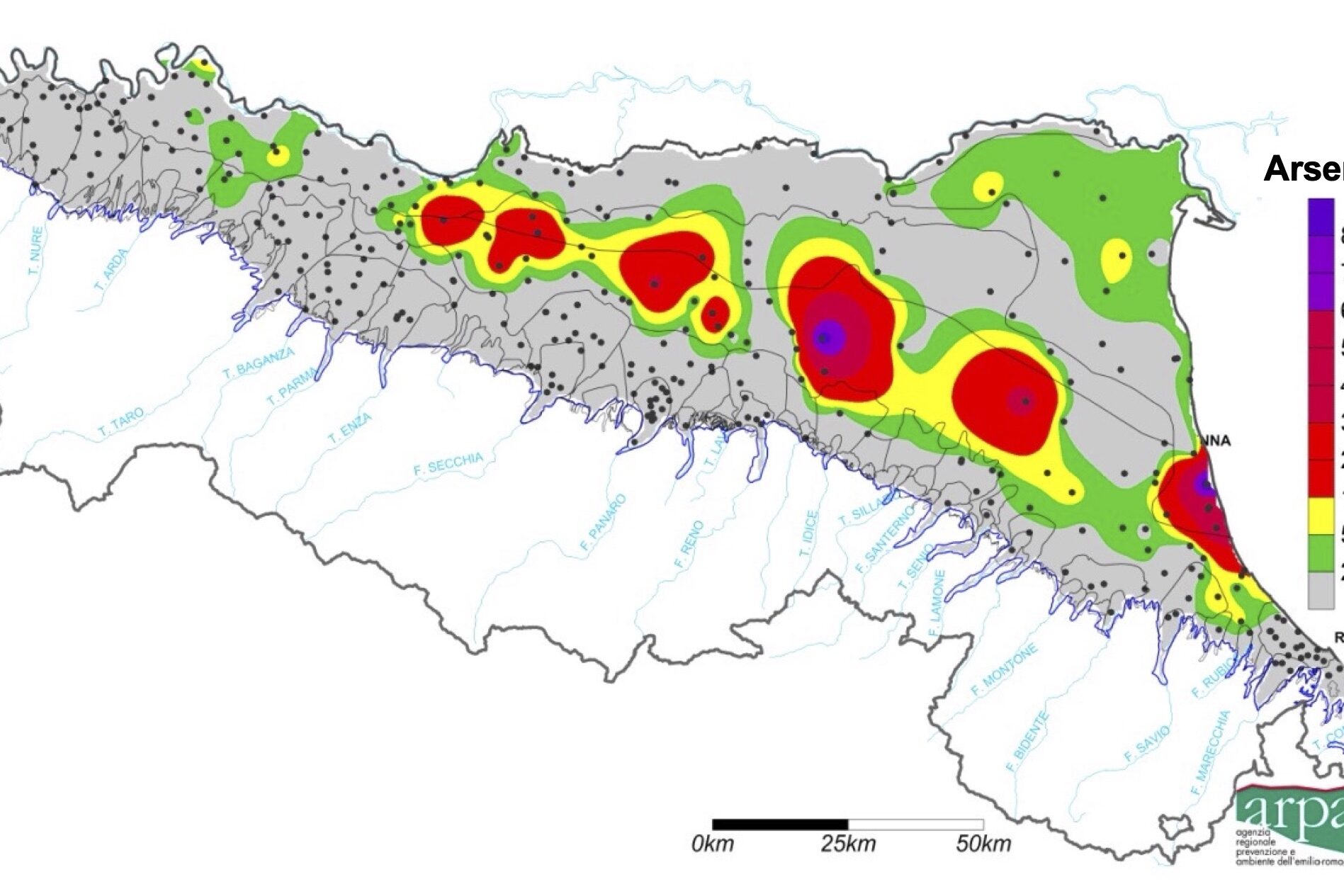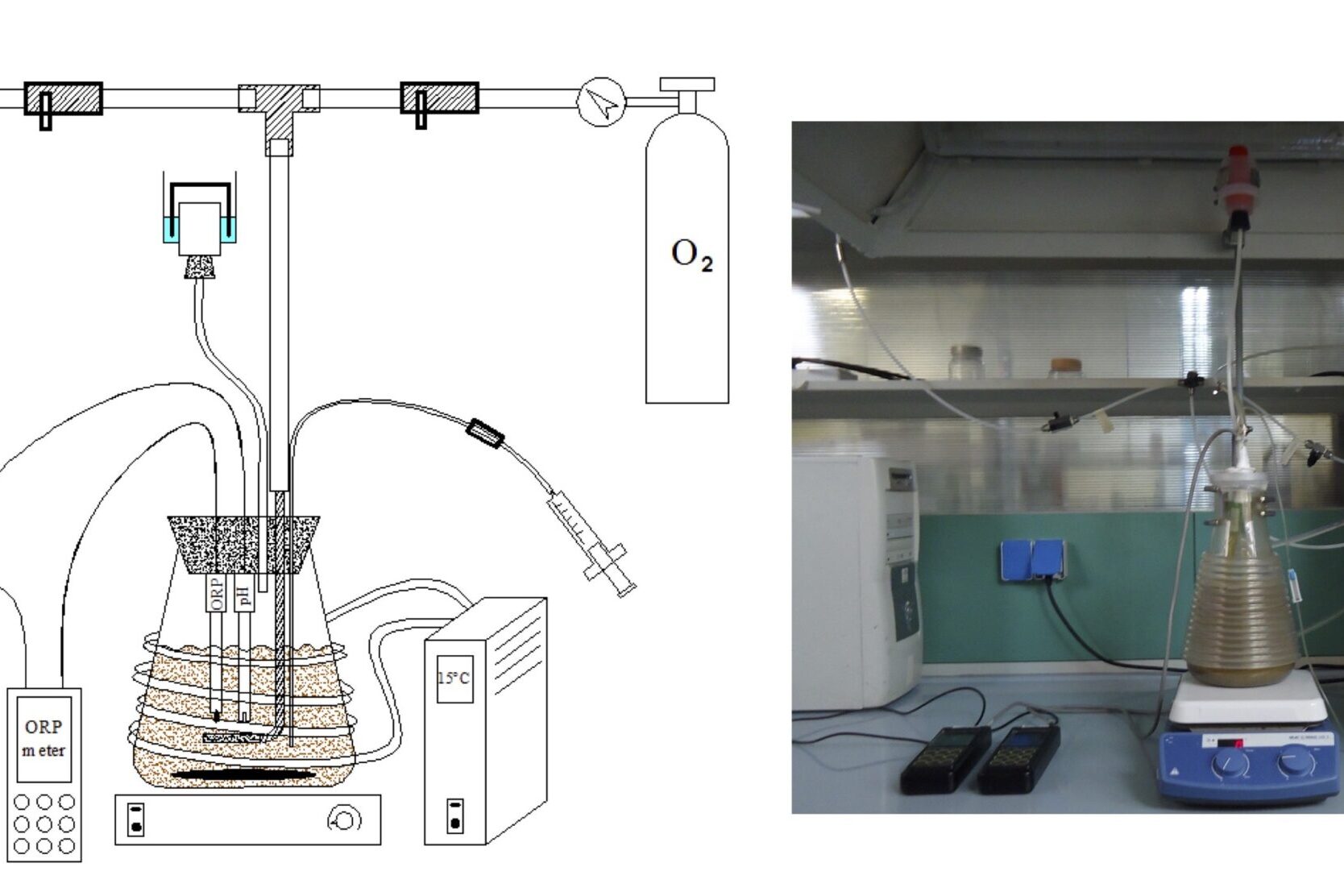Identification of arsenic natural levels in deep aquifer systems for the classification of chemical status of groundwater bodies according to Directive 2000/60/CE''
- Start date: 2012
- End date: 2013
- Funded by: ARPA – Agenzia Regionale per la Prevenzione e l’Ambiente dell’Emilia Romagna- Direzione Tecnica (Regional Angency for Environmental Protection)
- Topic: Experiments and geochemical modeling of the effects of Arsenic partitioning and dynamics on the assessment of groundwater background levels.
Arsenic background concentrations are the result of several factors, including physical and chemical processes taking place in the natural environment which are typically not captured by global statistical methods. A set of experimental activities have then been performed to improve our understanding of mechanisms influencing arsenic Natural Background Levels (NBLs). These activities include batch test and selective sequential extractions which have been designed and performed employing samples that are representative of the natural host matrix occurring in the deep groundwater systems investigated. The results of experimental characterizations focus on (a) the effects of redox changes on arsenic mobility, and (b) arsenic fractioning within different solid matrices. Batch tests are useful to understand the overall arsenic dynamics in the presence of different redox conditions. However, they did not allow to exhaustively evaluate the role of the main solid phases on redox and pH variations, which are key to trigger arsenic release, and the contribution of different solid phases on the detected arsenic concentrations. The development and application of a geochemical modeling framework conduct to the interpretation of the experimental results obtained from the batch tests on the basis of the results of sequential extractions. The results of this activity lead to define a conceptual model of the system which is consistent with physico-chemical processes that could take place in the experimental microcosm which was set-up to reproduce natural environmental conditions




